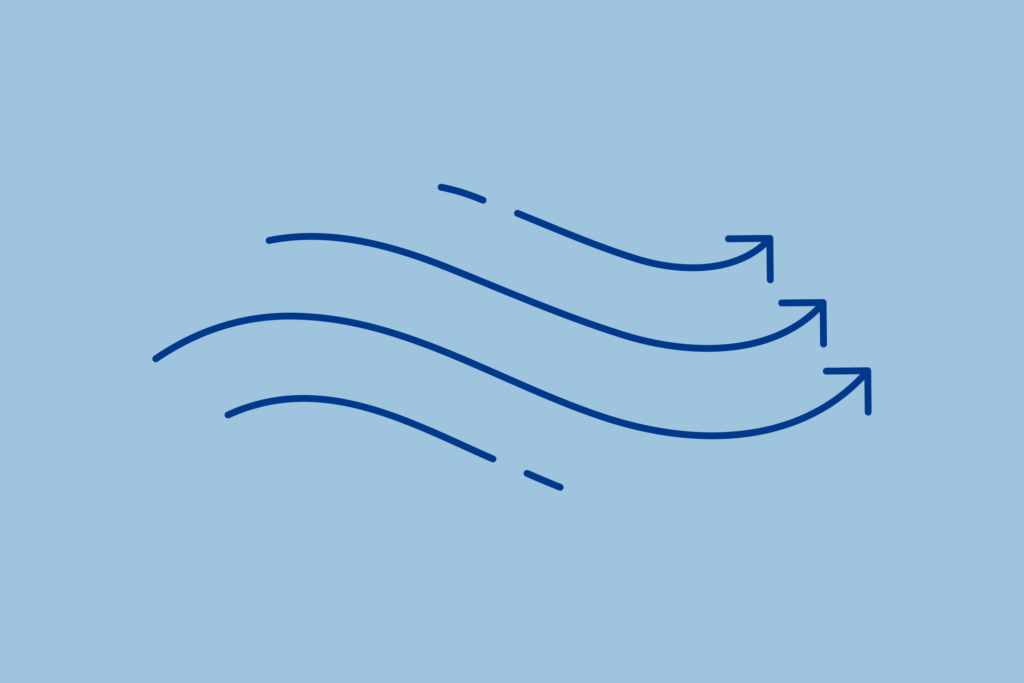How Does Barometric Stress Have an effect on Sleep?

Key Takeaways
- Climate bodily impacts your physique and sleep high quality: Barometric strain adjustments trigger your tissues to develop or contract, resulting in joint ache, complications, and respiratory difficulties that may disrupt sleep patterns.
- Low strain programs are the largest sleep disruptors: When storms method and atmospheric strain drops, your physique tissues swell, nerves turn into irritated, and you might really feel stressed regardless of being drained.
- You possibly can mitigate weather-related sleep issues: Constant bedtime routines, secure bed room temperature (65-68°F), air purifiers, and leisure methods assist counteract atmospheric adjustments’ results in your sleep.
Climate adjustments do extra than simply resolve whether or not you want an umbrella or jacket for the day. The invisible drive of atmospheric strain quietly influences your physique in methods you may not understand, particularly once you’re attempting to get a great night time’s sleep.
Many individuals discover they toss and switch extra throughout thunderstorms or really feel unusually drowsy earlier than it rains, however they don’t perceive why this occurs. Scientists have found that barometric strain adjustments can disrupt your sleep patterns, trigger bodily discomfort, and go away you feeling drained even after spending eight hours in mattress.
Your physique acts like a pure barometer, sensing these atmospheric shifts and responding in methods that may both assist or harm your sleep high quality. Some folks expertise joint ache and complications when storms method, whereas others battle to breathe comfortably when excessive strain programs transfer in.
Understanding how climate impacts your sleep may help you put together for these adjustments and sleep higher no matter what’s taking place outdoors your window. Learn on to be taught sensible options for weather-related sleep issues.
What Is Barometric Stress?
Understanding barometric strain requires studying in regards to the invisible weight of air that continually surrounds and presses down on every thing round you.
Atmospheric strain measures the load of all of the air above you urgent down on the Earth’s floor at any given second. Consider air as having precise weight, similar to water does once you’re swimming in a deep pool and really feel strain in your ears.
Scientists measure this air strain utilizing items referred to as millibars or inches of mercury, with regular strain studying round 30 inches of mercury at sea stage.
This atmospheric drive adjustments all through the day and with totally different climate patterns, creating results that your physique can detect even when your acutely aware thoughts doesn’t discover them.
When climate studies point out “rising” or “falling” strain, they’re describing how heavy or mild the air column above you has turn into.
Greater elevations have decrease air strain as a result of there’s much less air stacked up above these areas.
Your physique experiences this strain continually, however you solely discover it when it adjustments shortly or dramatically, reminiscent of when your ears pop throughout airplane flights or driving up mountains.
Climate and Sleep
Climate does way more than decide whether or not you seize a raincoat or sun shades earlier than leaving house.
Your physique continually responds to atmospheric adjustments, even when you may’t see or really feel them straight. These invisible shifts in air strain set off bodily reactions that may make you’re feeling uncomfortable, stressed, or unexpectedly drained.
Medical professionals have documented how climate adjustments can
worsen
persistent ache,
set off
complications
and
alter
hormone manufacturing in delicate people.
Climate programs shifting by your space create strain waves that your physique detects lengthy earlier than you discover clouds gathering within the sky. Some folks describe feeling “below the climate” with out realizing their our bodies are actually reacting to atmospheric circumstances.
When strain drops earlier than storms arrive, your physique tissues develop barely, which may irritate nerves and create discomfort that makes falling asleep troublesome.
These identical strain adjustments additionally have an effect on your mind’s manufacturing of melatonin, the hormone that indicators when it’s time to sleep. Excessive strain programs could make respiratory really feel extra labored, forcing your respiratory system to work tougher when it must be stress-free for the night time.
How climate programs create strain adjustments
Climate programs act like big air pumps, continually shifting excessive and low strain zones throughout the panorama in predictable patterns. Low strain programs type when heat air rises quickly, making a vacuum impact that pulls surrounding air inward and upward.
These rising air lots cool as they climb larger, forming clouds and infrequently producing rain or storms. Excessive strain programs develop when cool, dense air sinks downward, creating clear skies and secure climate circumstances.
The boundaries the place these totally different strain programs meet create climate fronts that carry speedy atmospheric adjustments.
Climate forecasters observe these strain programs utilizing satellite tv for pc imagery and ground-based devices, predicting how they’ll transfer and have an effect on native circumstances over the approaching days.
Why our our bodies can sense these invisible shifts
Your physique incorporates air-filled areas and versatile tissues that reply instantly to atmospheric strain adjustments, performing like a dwelling barometer.
The sinuses in your head, your interior ears, and even the areas between your joints comprise air that expands and contracts with strain fluctuations.
When atmospheric strain drops, these air-filled areas develop barely, probably inflicting discomfort, complications, or that “stuffy” feeling in your head.
Your blood vessels additionally reply to strain adjustments by increasing or contracting, which may set off complications or have an effect on circulation all through your physique.
Some folks have extra delicate strain receptors of their tissues, making them particularly good at detecting approaching climate adjustments by bodily signs.
Medical researchers consider this sensitivity
developed
as an evolutionary benefit,
serving to
early people put together for harmful climate circumstances by studying atmospheric indicators by their our bodies.
Low Stress
Low atmospheric strain creates a cascade of bodily results that may flip even the perfect sleepers into stressed, uncomfortable night time owls.
When storm programs method your space, the dropping air strain triggers a number of organic responses that intrude with regular sleep patterns and go away you feeling unsettled.
Storm programs carry dropping strain
Approaching thunderstorms, hurricanes, and winter climate fronts all trigger atmospheric strain to drop considerably within the hours earlier than they arrive. Climate programs can cut back air strain by a number of factors inside only a few hours, creating speedy adjustments that your physique struggles to adapt to shortly.
These strain drops usually start 12 to 24 hours earlier than you truly see rain or storms, giving your physique advance warning that climate adjustments are coming. The sooner the strain falls, the extra dramatic the consequences are typically on delicate people.
Physique tissues swell and nerves turn into irritated
Decrease atmospheric strain permits your physique tissues to develop barely, much like how a balloon grows bigger at larger altitudes the place air strain decreases.
This tissue growth places further strain in your nerves, blood vessels, and delicate areas all through your physique.
The swelling impacts tender tissues round your joints, in your sinuses, and even in your mind, creating widespread discomfort.
Your nerve endings turn into extra delicate throughout these intervals, making you extra conscious of aches and pains that you simply may not usually discover.
This elevated sensitivity could make it troublesome to search out snug sleeping positions or ignore minor discomforts that might normally not disturb your relaxation.
Joint ache and complications enhance throughout low strain
Individuals with arthritis, outdated accidents, or persistent ache circumstances expertise considerably extra discomfort when atmospheric strain drops earlier than storms.
The expanded tissues round
joints
create further strain on already delicate areas,
intensifiying
ache ranges that may preserve you awake for hours.
Complications
turn into
extra frequent and extreme throughout low strain intervals, because it impacts the strain of your bodily tissues and causes undesirable growth.
Even folks with out persistent circumstances might develop stress complications or really feel uncommon aches of their neck, shoulders, or again throughout strain drops.
These ache will increase usually
peak
within the night hours, making bedtime notably difficult when you ought to be winding down for sleep.
Stressed emotions regardless of sleepiness
At bedtime, your can physique ship combined indicators, with drowsiness competing in opposition to the discomfort from swollen tissues and irritated nerves.
Many individuals discover themselves tossing and turning regardless of feeling exhausted, unable to search out snug positions or quiet their stressed minds. The atmospheric adjustments may have an effect on your nervous system, creating emotions of tension or uneasiness that make leisure troublesome.
This stressed vitality usually persists all through the night time, resulting in frequent wake-ups and poor sleep high quality even once you spend satisfactory time in mattress.
Seasonal Climate
Spring and fall create the largest sleep challenges as a result of climate programs change continually throughout these months. Your physique struggles to maintain up with these frequent shifts, making it laborious to get high quality relaxation.
- Spring and fall carry frequent strain shifts – Climate programs battle one another throughout these seasons, inflicting strain to rise and fall many instances every week.
- Temperature adjustments mix with strain variations – Your physique faces double hassle when it should deal with each uncomfortable temperature swings and pressure-related tissue swelling on the identical time.
- Individuals with joint issues expertise worse signs – These with arthritis or outdated accidents really feel way more ache throughout spring and fall as a result of atmospheric adjustments preserve their joints infected.
- Getting snug in mattress turns into tougher – Altering climate makes your physique really feel totally different every night time, forcing you to continually regulate pillows and blankets to search out consolation.
- Sleep schedules get disrupted throughout climate transitions – Frequent climate adjustments mess up your inner clock, making you’re feeling sleepy at totally different instances and battle with constant bedtimes.
These seasonal challenges can final for months, however understanding them helps you put together higher. With the suitable methods, you may nonetheless get good sleep even when the climate retains altering round you.
Humidity and Stress Modifications
Humidity and barometric strain work as a workforce to create sleep issues which can be usually worse than what both situation would trigger alone.
When these two atmospheric components mix throughout climate adjustments, they multiply one another’s results and create sleeping circumstances that may problem even probably the most sound sleepers.
Excessive humidity makes air really feel thick and heavy
Humid air incorporates way more water vapor than dry air, making a dense, heavy environment that feels virtually like respiratory by a moist fabric.
Your physique usually notices when humidity ranges rise, such because the air feeling “heavy” and muggy. That mentioned, you’re extra more likely to detect excessive humidity ranges when it’s scorching out then within the lifeless of winter.
This thick air high quality makes your bed room really feel stuffy and uncomfortable, even when you could have followers operating or home windows open for air flow. Extra effort is required to handle bed room humidity ranges, like a dehumidifier.
Excessive humidity, together with overcast days, has additionally been
tied to
detrimental feelings.
Respiratory requires extra effort
Your lungs should work considerably tougher to extract oxygen from humid air as a result of water vapor takes up area that might usually comprise breathable gases. The elevated effort required for every breath turns into particularly noticeable once you’re mendacity down and attempting to chill out for sleep.
Humid circumstances
drive
your respiratory system to labor all through the night time, stopping your physique from reaching the deep leisure wanted for high quality relaxation. This further
respiratory work
can go away you feeling drained within the morning, even in the event you slept for a full eight hours.
Sleep turns into much less restful and extra interrupted
The mixture of thick air and labored respiratory creates a cycle of poor sleep high quality that may persist for a number of nights throughout humid climate intervals.
Many individuals expertise extra frequent wake-ups throughout humid nights as a result of their our bodies battle to take care of snug respiratory patterns whereas sleeping.
The heavy air high quality makes it troublesome to realize the deep sleep phases the place your physique performs its most essential restoration work.
Even once you do go to sleep, the continued effort required for respiratory retains your nervous system extra lively than regular, leading to lighter, much less restorative sleep.
Mixed results create stronger sleep disruption
Low strain programs usually carry each dropping atmospheric strain and elevated humidity, creating an ideal storm of sleep-disrupting circumstances.
The tissue swelling from strain adjustments combines with the respiratory difficulties from humid air to create widespread bodily discomfort that makes sleep almost inconceivable.
These mixed results can impression your sleep high quality for a number of consecutive nights, leaving you feeling exhausted and unable to recuperate till climate circumstances enhance.
Why Some Individuals Really feel Climate Modifications Extra
Individuals react to climate adjustments in fully other ways, with some barely noticing strain shifts whereas others really feel each small change. This phenomenon is called
meteoropathy.
A number of private components decide whether or not your physique acts like a climate prediction system or stays unaffected by atmospheric circumstances.
- Particular person sensitivity varies tremendously – Your genes management how delicate your strain receptors are, which explains why some folks predict storms by physique aches whereas others really feel nothing.
- Age can enhance climate sensitivity – Older adults really feel stronger reactions to strain adjustments as a result of getting old makes tissues much less versatile and extra more likely to swell throughout climate shifts.
- Present well being circumstances make results stronger – Continual issues like arthritis, migraines, and respiratory points amplify your physique’s response to climate, turning small atmospheric adjustments into main sleep issues.
- Some folks predict climate by physique aches – Sure people turn into so delicate to strain adjustments that they will forecast storms extra precisely than meteorologists utilizing solely their physique signs.
- Earlier accidents might turn into extra delicate – Outdated accidents, surgical websites, and healed trauma areas usually develop heightened sensitivity to strain adjustments, creating weather-related ache years after the unique harm.
Understanding your private climate sensitivity helps clarify why some nights really feel extra uncomfortable than others. As soon as you understand how your physique responds to atmospheric adjustments, you may higher put together for weather-related sleep challenges.
Sensible Options
You possibly can take a number of steps to scale back how climate adjustments have an effect on your sleep, even when you may’t management what occurs outdoors. These confirmed methods assist your physique deal with strain adjustments higher and create steadier sleeping circumstances it doesn’t matter what the climate brings.
- Create a constant bedtime routine – Following the identical calming actions each night time for 30-60 minutes earlier than mattress helps your physique put together for sleep even when atmospheric adjustments attempt to disrupt your pure patterns.
- Apply leisure methods earlier than sleep – Deep respiratory workouts, muscle leisure, and psychological workouts assist struggle the bodily stress and fear that climate adjustments usually create in your physique.
- Preserve bed room temperature snug and secure – Sustaining your bed room between 65-68 levels with layered bedding helps your physique keep snug regardless of outdoors temperature swings that include climate adjustments.
- Use air purifiers to enhance air high quality – HEPA filter air purifiers within the bed room and residential create cleaner, extra breathable air that reduces the additional effort wanted for respiratory throughout excessive strain intervals or humid climate.
- Deal with underlying well being circumstances correctly – Working with medical doctors to handle persistent issues like arthritis or respiratory points reduces how a lot climate adjustments can disrupt your sleep.
- Observe climate patterns and sleep high quality collectively – Protecting a easy log of your sleep high quality and every day climate circumstances helps you establish private triggers and put together for troublesome nights forward of time.
These options work finest once you use them collectively slightly than attempting only one method, reminiscent of pairing a sleep diary with totally different leisure workouts. With constant effort, you may sleep higher even when the climate retains altering round you.
FAQs
Can barometric strain actually have an effect on how effectively I sleep?
Sure, barometric strain adjustments can considerably impression your sleep high quality by a number of measurable bodily results in your physique.
When atmospheric strain drops earlier than storms, your physique tissues develop barely, which may irritate nerves and create discomfort that makes falling asleep troublesome.
These connections present that folks expertise extra sleep disruptions and take longer to go to sleep during times of speedy strain adjustments.
Why do I really feel extra drained earlier than storms arrive?
Low barometric strain earlier than storms triggers your mind to provide extra melatonin than traditional, which may make you’re feeling unexpectedly drowsy through the day or early night.
This elevated melatonin manufacturing usually begins 12-24 hours earlier than the precise storm hits your space, disrupting your regular sleep-wake cycle.
Nevertheless, the bodily discomfort from tissue swelling and nerve irritation could make it troublesome to realize restful sleep regardless of feeling drained.
This creates a irritating scenario the place you’re feeling exhausted however can’t get the standard relaxation your physique wants.
Are some folks extra delicate to climate adjustments than others?
Particular person sensitivity to barometric strain adjustments varies dramatically from individual to individual as a consequence of genetic components, age, and current well being circumstances.
Some folks inherit extra delicate strain receptors of their tissues, making them extremely conscious of even minor atmospheric fluctuations.
Older adults sometimes expertise stronger reactions as a result of getting old makes tissues much less versatile and extra vulnerable to swelling throughout strain shifts.
Individuals with persistent circumstances like arthritis, migraines, or respiratory issues additionally are likely to have amplified responses to climate adjustments that may considerably impression their sleep high quality.
What can I do to sleep higher throughout climate adjustments?
Making a constant bedtime routine helps your physique put together for sleep even when atmospheric adjustments attempt to disrupt your pure patterns. Apply leisure methods like deep respiratory or progressive muscle leisure to counteract the bodily stress that climate adjustments usually create.
Preserve your bed room temperature secure between 65-68 levels and think about using an air air purifier to enhance respiratory circumstances throughout excessive strain or humid intervals. Observe your sleep high quality alongside climate patterns to establish your private triggers and put together for difficult nights earlier than they happen.
Does humidity make weather-related sleep issues worse?
Sure, excessive humidity works along with barometric strain adjustments to create sleep issues which can be usually worse than both situation would trigger alone. Humid air incorporates extra water vapor, making it thicker and tougher to breathe, which forces your lungs to work considerably tougher all through the night time.
When humidity combines with low strain programs, you face each the tissue swelling results of dropping strain and the respiratory difficulties of moisture-saturated air. This mixture could make sleep almost inconceivable for a number of consecutive nights till climate circumstances enhance.
How lengthy does it take to recuperate regular sleep after climate adjustments?
Restoration time varies considerably between people, with some folks bouncing again to regular sleep inside one night time whereas others want three to 5 days to completely recuperate. Youthful, more healthy folks sometimes return to baseline sleep high quality inside 24-48 hours after atmospheric circumstances stabilize.
Older adults or these with persistent well being circumstances might have for much longer restoration intervals to get again to their common sleep patterns. Sustaining constant sleep schedules and practising good sleep hygiene may help you recuperate extra shortly from weather-related sleep disruptions.
Ought to I see a physician about weather-related sleep issues?
Contemplate consulting a healthcare supplier if climate adjustments constantly disrupt your sleep for a number of nights or if the disruptions considerably impression your every day functioning.
Individuals with current well being circumstances like arthritis, migraines, or respiratory issues ought to focus on climate sensitivity with their medical doctors, as medicine changes may assist throughout difficult atmospheric intervals.
There are focused remedies for extreme weather-related sleep issues and make it easier to develop personalised methods for managing atmospheric sensitivity.
In the event you expertise persistent sleep issues that worsen throughout climate adjustments, skilled medical analysis may help establish underlying circumstances that may be contributing to your climate sensitivity.
Conclusion
Climate adjustments have an effect on your sleep greater than most individuals understand, with barometric strain fluctuations creating measurable disruptions in sleep high quality and luxury ranges all through the night time.
Understanding how your physique responds to atmospheric shifts empowers you to acknowledge why sure nights really feel extra stressed and why you may get up drained regardless of spending satisfactory time in mattress.
Nevertheless, you don’t have to just accept poor sleep each time the climate adjustments, as confirmed methods like constant bedtime routines, leisure methods, and environmental controls can considerably cut back weather-related sleep disruptions.
Particular person sensitivity varies tremendously between folks, so taking note of your private patterns helps you establish which atmospheric circumstances have an effect on you most and when to implement protecting measures.
By taking proactive steps to handle your sleep surroundings and observe your private climate sensitivity, you may keep higher relaxation high quality no matter what atmospheric circumstances develop outdoors your bed room window.







